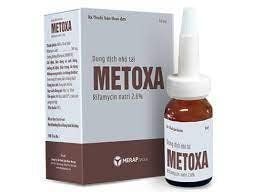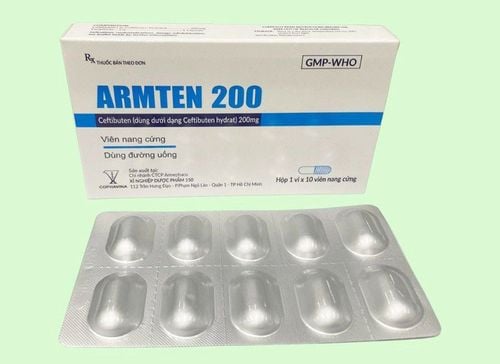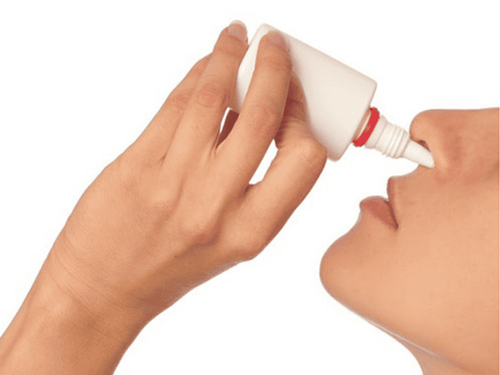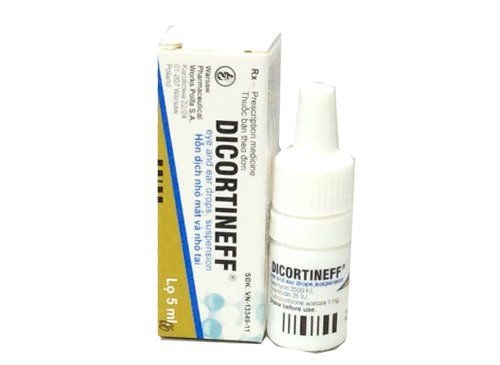This is an automatically translated article.
The article was professionally consulted with Master, Doctor Nguyen Nam Phong - Pediatrician - Department of Pediatrics - Neonatology - Vinmec Phu Quoc International General Hospital.Earwax is a waxy waste excreted from the ear canals of humans and other mammals. It is quite easy to remove earwax in adults, but cleaning accumulated earwax in children is quite difficult because children's ear canals are very fragile and require careful handling.
1. What causes earwax accumulation?
Earwax is connected by the outer ear canal, the part between the earlobe and the eardrum of the middle ear. It is like an unnecessary biological waste but has a certain use. For example:Protect the ear canal from water entering Helps the ear to avoid harmful agents such as dirt, foreign objects from the external environment To prevent the ear from drying and itching by lubricating the ear canal Earwax secreted as a way to prevent dirt...that can damage the eardrum when they get inside the ear. Normally, earwax builds up, then dries up and moves to the outer ear, where it will wash away. In the process, it traps the external debris and takes it with it to move. However, sometimes earwax builds up faster than the body can get rid of it, and that's when earwax buildup can become a problem.
Only when the child has too much earwax, the earwax is lumpy and hard that a problem arises. Over time, earwax can be pushed to the ear canal and peel off on its own to make room for a new wax layer to form. Every day when bathing, this wax layer will become softer, you can gently remove this dead skin with a cotton swab. But in some cases, hard earwax that stays too deep in the ear canal can be harmful to young children.
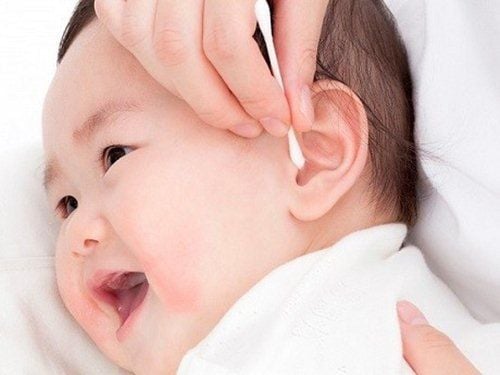
2. Earwax buildup can interfere with your child's hearing
When a child's ear canal is blocked by earwax, his hearing will be obstructed. (Liquid or pus trapped in the middle ear can also cause hearing loss during or after an ear infection.) In addition, the condition can also cause a child to have ear pain.3. Causes of earwax accumulation in children
Earwax buildup in children can be caused by a number of reasons. Here are some common causes of earwax accumulation in children, including:Frequent use of cotton swabs: using cotton swabs is not an ideal way to remove earwax and health professionals recommend Foxes should not use them. Cotton swabs can be the cause of pushing earwax deeper into the ear canal, causing it to get stuck in there. Small objects inserted into the ear canal: Inserting objects into the baby's ear canal can also push earwax deeper. Constantly inserting fingers into the ear canal: the child's ear canal is very small and narrow. Putting your finger inside the ear canal often can cause the inner earwax to be compressed. Therefore, never use your fingers to clean the baby's earwax and prevent the child from putting their hands in the ear often. Use hearing aids or earplugs for a long time: the entrance of the ear canal will be blocked by the machine. hearing aids and earplugs block and prevent earwax from coming out. If a child wears hearing aids or earplugs for several hours a day, he or she may be at risk for hard earwax Excess earwax secretion: Some children develop excess earwax secretion. This can cause more wax buildup and lead to the formation of earwax plugs. Earwax discharge may seem like a small thing, but sometimes young children can have a few problems with it.
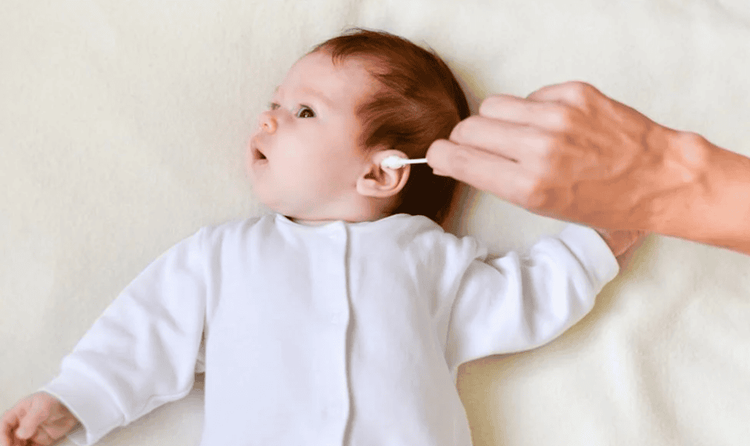
4. What problems does the long-term accumulation of earwax cause?
Long-term accumulation of earwax in the ear can lead to a number of problems:Children will rub or pull on their ears more than usual To notify an adult that something is wrong, the child may point at the ear . Earwax can become hard and cause a child to feel something is stuck inside the ear canal Earwax can clog the ear canal and affect hearing If wax buildup becomes severe In severe cases, you may notice a bit of hard wax sticking to your baby's ear canal Serious signs of earwax buildup include pain, fussiness, and sometimes dizziness. You need to take your child to the doctor right away if any of these symptoms are present. Excessive earwax buildup can increase pressure on the eardrum, causing more serious complications.
5. How to distinguish problems caused by earwax accumulation or ear infection?
Children with ear infections will have symptoms similar to earwax accumulation. However, an ear infection will cause other symptoms such as fever, discharge from the ear, ear pain, poor appetite, and unexplained fussiness. In the case of children with ear infections, earwax also has an unpleasant odor.If the mother examines the child's ear canal and finds that the earwax is golden brown, that is the natural color of the wax. If your child's earwax is red, wet, and has a yellow discharge, these are most likely signs of an ear infection.
It should be noted that the ear canal can clear excess earwax on its own without the need for interventional earwax removal.
6. How to remove earwax for children
Earwax should not be removed if it is not causing symptoms and does not prevent your pediatrician from examining your child's ears. If you're cleaning your child's ears, use a soft cloth to wipe away any wax from the outside of the ear.Do not put anything in the ear, do not use a cotton swab to insert into the child's ear canal for the purpose of removing earwax because this can cause the earwax to enter deeper. In addition, this puts the child at risk of a ruptured eardrum, and the accumulation of earwax is made worse by the wax being pushed deeper into the ear canal.
If there is earwax in your child's outer ear, you can clean it with a cotton swab or better yet with a wet washcloth. If your child has a lot of earwax accumulating inside the ear, the child should be taken to the doctor for a closer look. To remove excessive earwax buildup in a child, the doctor will use the following methods:
Ear drops : to soften the earwax and make it fall off on its own, ear drops should be used at least. once a day. The amount of medication and the duration of treatment depend on the extent of the earwax buildup. Put the baby down, turn the ear to be instilled and gently put a few drops of the medicine in the ear. Hold the lying position for a few minutes before getting your baby to sit up. Never use your fingers or a cotton swab to remove earwax. The earwax will come off on its own after being softened. Earwax softeners are often available in pharmacies and over-the-counter, but doctors do not recommend using them in children under 6 years of age unless prescribed or recommended by a doctor.
Remove earwax manually: If the earwax is too hard, you should take your child to see a doctor. Specialists have a specialized set of tools to safely remove manual earwax. However, parents will have to hold the baby because the baby will often refuse to lie still or if the earwax is too hard and can cause pain for the baby, the doctor will consider the use of anesthetic or anesthetic. In the case of a child with an ear infection, the doctor may prescribe antibiotics after the earwax removal procedure.
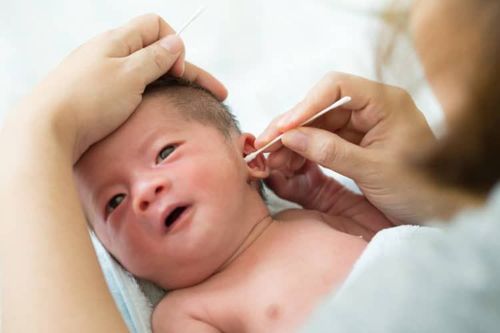
7. What can be done to prevent earwax buildup?
Earwax becomes thicker with people who are dehydrated, so make sure your child is drinking plenty of water.Also, to prevent earwax problems in children. Mothers need to adhere to the following principles:
Do not use cotton swabs to clean earwax Do not remove earwax with fingers or other tools Remove hearing aids after a period of use Check your baby's ears regularly. The day after the bath, the mother should check the baby's ears. You'll spot early signs of excessive earwax buildup.
If the baby's ears have any abnormal signs, the child should be taken to a doctor for timely examination and treatment to avoid dangerous complications.
When a child shows abnormal signs of health, parents can take the child to Vinmec Health system for timely examination and treatment.
In addition, to prevent diseases that babies often get, parents should pay attention to nutrition to improve children's resistance. At the same time, add supporting foods containing lysine, essential micro-minerals and vitamins such as zinc, chromium, selenium, B vitamins,... snacks and less digestive problems.
Parents can learn more:
Why do you need to supplement Lysine for your baby?
The role of zinc - Guidelines for reasonable zinc supplementation
Please visit the website Vinmec.com regularly and update useful information to take care of your baby and family.
Please dial HOTLINE for more information or register for an appointment HERE. Download MyVinmec app to make appointments faster and to manage your bookings easily.
Reference source: babycenter.com





